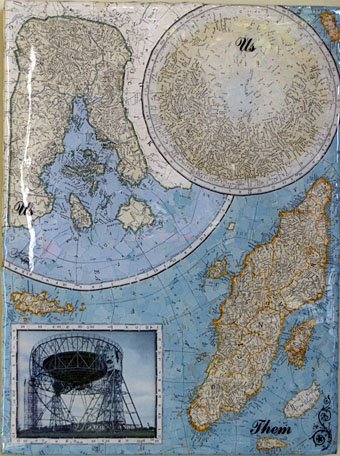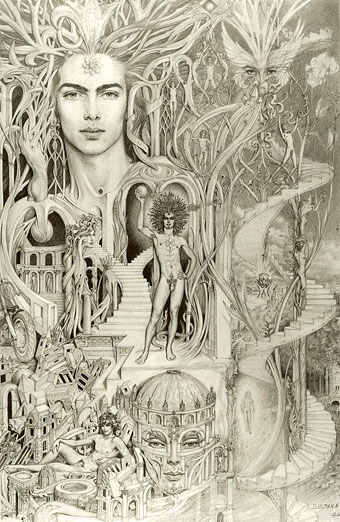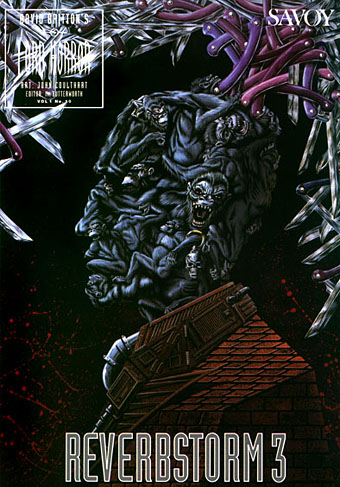
Us and Them (Torn Map Collage on Canvas).
At first glance, from afar, Berrini’s works look like a collection of high-quality maps and atlases with unfamiliar continents and geographic markings. As you examine the details of the maps a bit closer, and try to follow the geographic and geopolitical information displayed, you do a double-take as you realize that the maps themselves are actually constructed from minuscule pieces of other maps, forming new terrain, new geographies, and new names of places in entirely new languages. Berrini maintains the abstract language of maps, yet plays with our notions of their unspoken authority and overall usability.
By recycling different visions of the world, past and present, Berrini hopes to capture her nostalgia for the places that she has not been to. “The creation of maps has historically been a painstaking process, meticulously striving for accuracy. I aim to slowly create a separate world from the scraps of my current fascinations. I am reforming the world that is available to me piece by piece to reflect my imagination of what I do not know. A pointless precision beautifully mirroring nothing.”—Francesca Berrini
Via Design Observer.
• Unusual Cards by Francesca Berrini
Elsewhere on { feuilleton }
• The fantastic art archive
Previously on { feuilleton }
• The Voynich Manuscript
• The Codex Seraphinianus
• 20 Sites n Years by Tom Phillips
• The Atlas Coelestis of Johann Gabriel Doppelmayr


